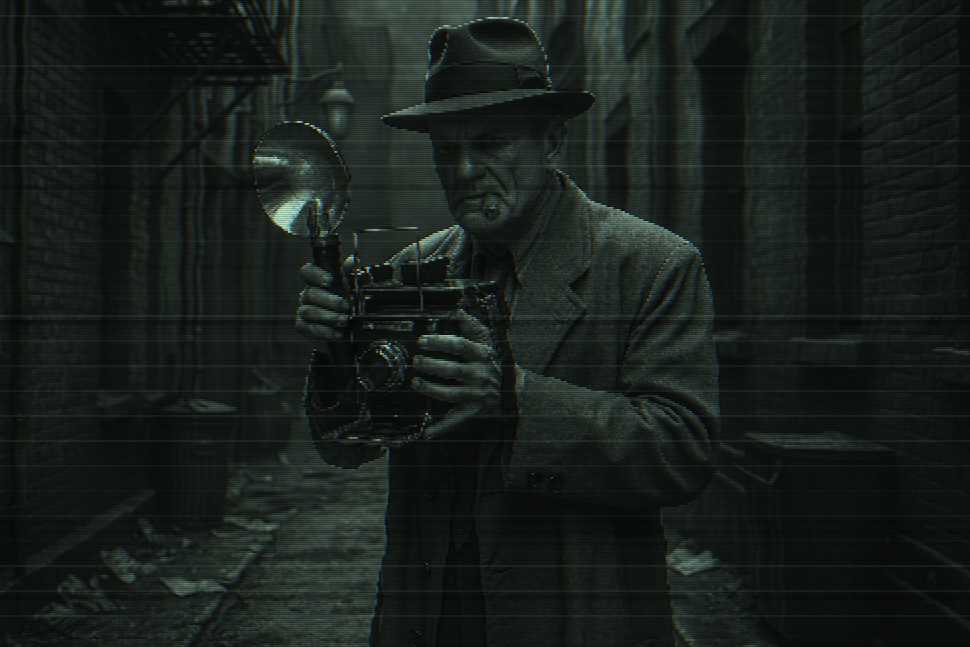
The Public Eye 1992
This transmission focuses on a human male who earns his living by photographing crimes, accidents, and night-life tragedies in mid-century Earth cities. He is known as “Bernzy,” though he is often referred to simply as “the guy with the camera.” He is not glamorous. He is not popular. He is, however, always watching — and that gives him influence.
Bernzy records everything: broken bodies, shady deals, private moments captured just before or after disaster. He is drawn to darkness not for pleasure, but for professional compulsion. The humans around him tolerate his presence because his work is useful — until it isn’t. His existence is simultaneously vital and inconvenient.
He is pulled into a deeper criminal scheme after a romantic entanglement with a wealthy club owner. This relationship is marked by mutual interest, mistrust, and constant evasion. She requires help. He wants recognition. Neither receives exactly what they seek.
As Bernzy uncovers layers of organized crime and corruption, he tries to maintain his neutrality — but Earth neutrality rarely survives contact with emotional entanglement. He is beaten, threatened, and repeatedly warned to walk away. He does not. His loyalty is to the truth, or at least to the photograph of it.
The film concludes with Bernzy as he began: alone, camera in hand, capturing what others look away from.
Conclusion: Humans often mistake observation for control. They believe that watching events unfold grants them safety — or relevance. But in the end, most observers are still pulled into the story they thought they were merely recording.
This record suggests that those who watch from the margins may pose more risk than those at the center. Nebulon should monitor the quiet figures with cameras — not because they act, but because they might understand what they’re seeing.
